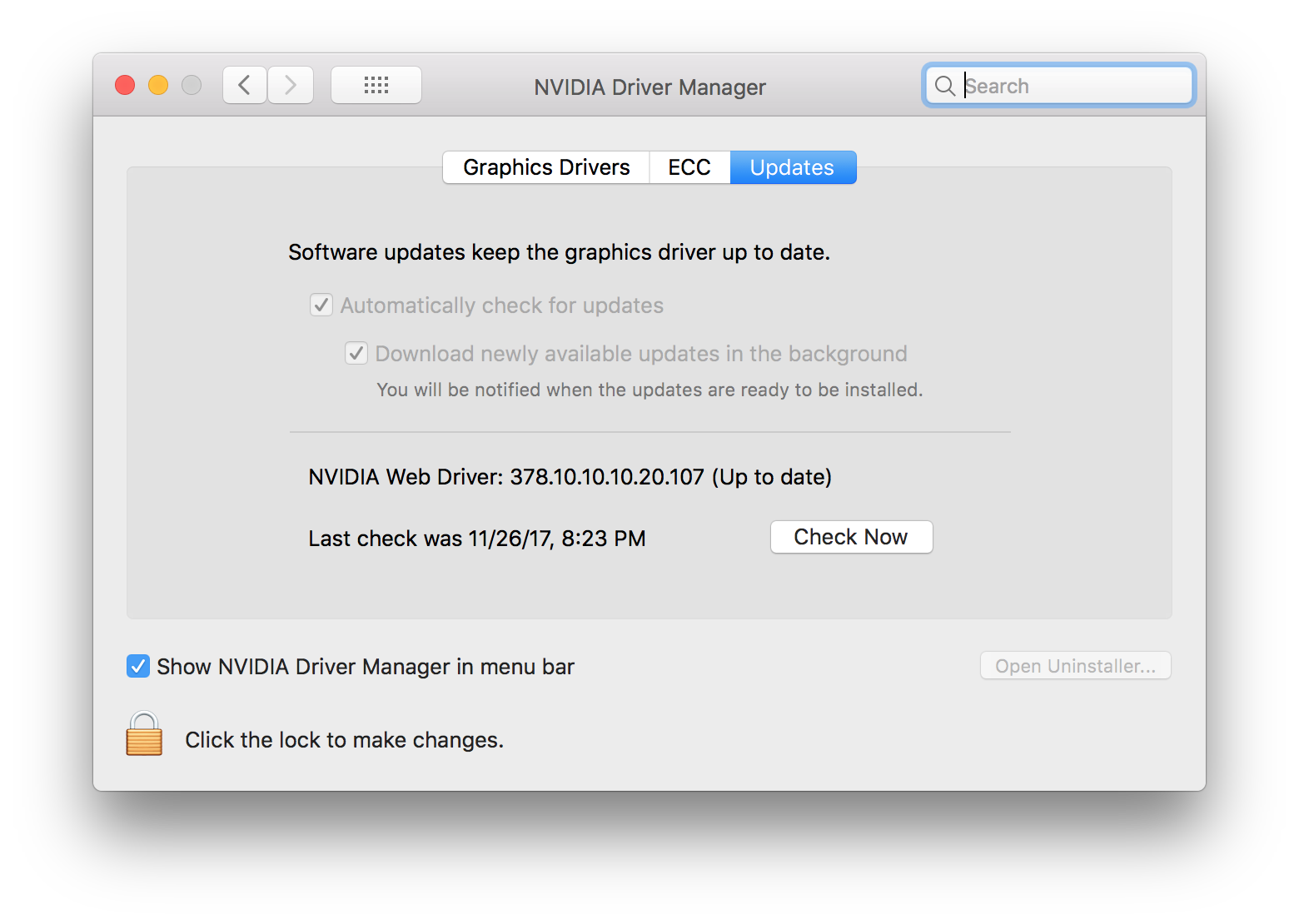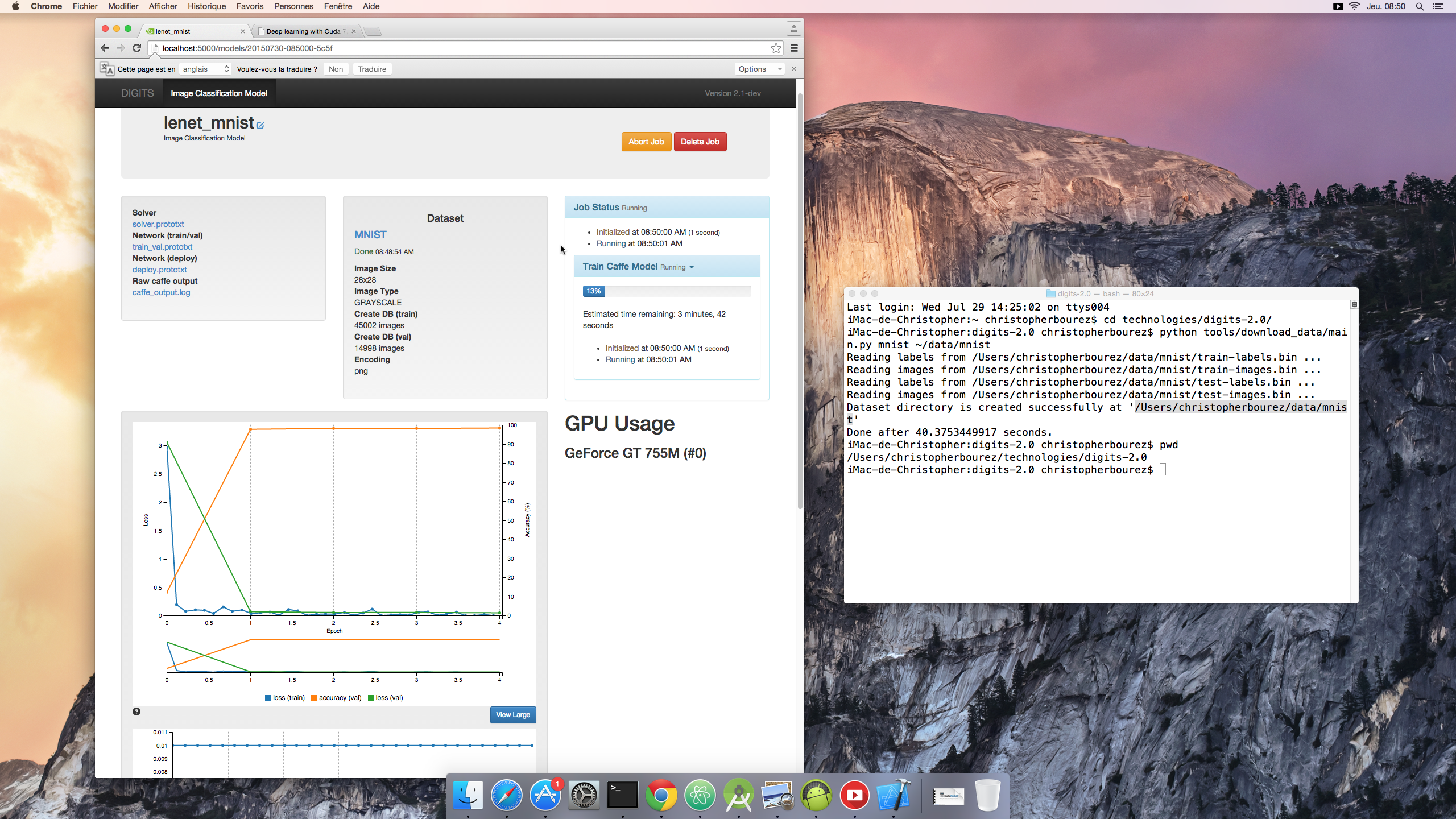Nvidia is to drop support for macOS in CUDA, its GPU computing platform, used by many GPU renderers.

New Release 8.0.57. CUDA driver update to support macOS 10.12 and NVIDIA display driver 367.15.10.25f01; Recommended CUDA version(s): CUDA 8.0; Supported MAC OS X. 10.12.x; 10.11.x; An alternative method to download the latest CUDA driver is within Mac OS environment. Access the latest driver through System Preferences Other CUDA. Download English (US), New Release 6.0.37. CUDA driver 6.0.37 is required for CUDA support on Mac OS X 10.9 Mavericks.

According to the release notes for CUDA Toolkit, this week's 10.2 update will be 'the last to support macOS for developing and running CUDA applications'.
A further hurdle for Mac users who want to use Nvidia GPUs
Nvidia's decision to stop supporting macOS in CUDA isn't a major surprise given that, for some years, Apple hasn't included Nvidia GPUs in its workstations and laptops.

Apple's consumer machines offer integrated Intel graphics as standard; professional workstations, like the Mac Pro, iMac Pro and 16-inch MacBook Pro, also offer discrete AMD cards.
That leaves an external GPU chassis as the only option for running GPU renderers that require CUDA – and therefore a Nvidia graphics card – on macOS.
However, even running Nvidia hardware in eGPUs became much harder with the release of macOS 10.14 last year, given the lack of graphics drivers for current Nvidia cards. Euro truck simulator 2 for the mac os.
The reasons are discussed in more detail in this AppleInsider story, but at the time of posting, the only GPUs that Apple officially specifies for eGPUs are made by AMD. Cubase 5 software, free download for mac.
Nvidia Cuda Install
So which GPU renderers don't need CUDA?
That creates problems for Mac users hoping to use their GPUs for rendering, since the major commercial GPU render engines – including OctaneRender, Redshift and V-Ray GPU – currently require CUDA.
Nvidia Os X

New Release 8.0.57. CUDA driver update to support macOS 10.12 and NVIDIA display driver 367.15.10.25f01; Recommended CUDA version(s): CUDA 8.0; Supported MAC OS X. 10.12.x; 10.11.x; An alternative method to download the latest CUDA driver is within Mac OS environment. Access the latest driver through System Preferences Other CUDA. Download English (US), New Release 6.0.37. CUDA driver 6.0.37 is required for CUDA support on Mac OS X 10.9 Mavericks.
According to the release notes for CUDA Toolkit, this week's 10.2 update will be 'the last to support macOS for developing and running CUDA applications'.
A further hurdle for Mac users who want to use Nvidia GPUs
Nvidia's decision to stop supporting macOS in CUDA isn't a major surprise given that, for some years, Apple hasn't included Nvidia GPUs in its workstations and laptops.
Apple's consumer machines offer integrated Intel graphics as standard; professional workstations, like the Mac Pro, iMac Pro and 16-inch MacBook Pro, also offer discrete AMD cards.
That leaves an external GPU chassis as the only option for running GPU renderers that require CUDA – and therefore a Nvidia graphics card – on macOS.
However, even running Nvidia hardware in eGPUs became much harder with the release of macOS 10.14 last year, given the lack of graphics drivers for current Nvidia cards. Euro truck simulator 2 for the mac os.
The reasons are discussed in more detail in this AppleInsider story, but at the time of posting, the only GPUs that Apple officially specifies for eGPUs are made by AMD. Cubase 5 software, free download for mac.
Nvidia Cuda Install
So which GPU renderers don't need CUDA?
That creates problems for Mac users hoping to use their GPUs for rendering, since the major commercial GPU render engines – including OctaneRender, Redshift and V-Ray GPU – currently require CUDA.
Nvidia Os X
Renderer developers looking to use Nvidia's OptiX framework – increasingly being used to implement hardware-accelerated ray tracing on Nvidia's curent-gen RTX GPUs – also need the CUDA Toolkit.
While some GPU renderers, such as Blender's Cycles engine, support AMD cards via OpenCL, even OpenCL support was deprecated in macOS 10.14 in favour of Apple's own Metal 2 API.
At the time of posting, few GPU renderers support Metal: AMD's own Radeon ProRender is one of the few exceptions, although Metal-compatible versions of both Redshift and OctaneRender have been announced.
Related posts:
Tags: AMD, Blender, CUDA, CUDA Toolkit, Cycles, eGPU, GPU ray tracing, GPU rendering, macOS, macOS 10.14, macOS Mojave, Metal, Metal 2, NVIDIA, Octane X, OctaneRender, OptiX, Radeon ProRender, Redshift, RTX, V-Ray, V-Ray GPU
